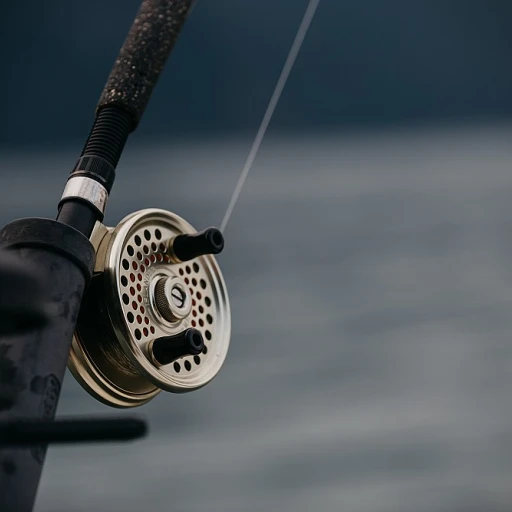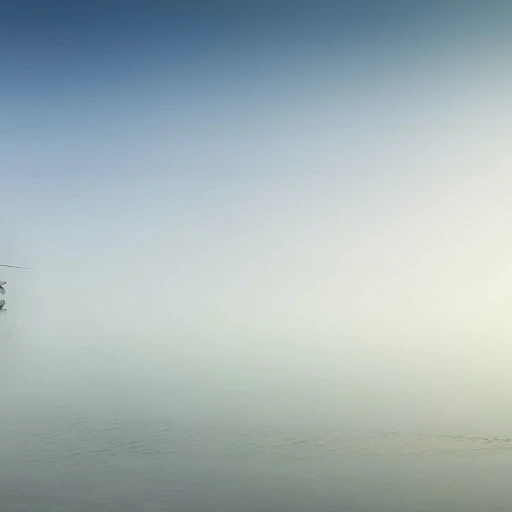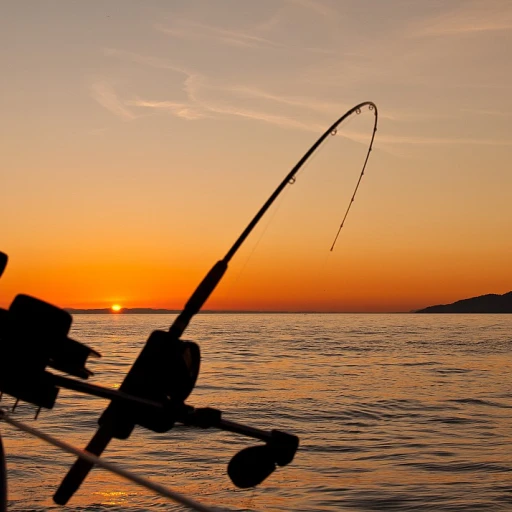
What are hybrid bay boats?
What makes hybrid bay boats unique?
Hybrid bay boats, often seen as the jack-of-all-trades in the boat world, blend the best features of bay boats and offshore boats. These vessels are designed to navigate both shallow waters and deeper offshore areas. Unlike their traditional counterparts, hybrid bay boats come with a shallow draft, typically around 12-15 inches, making them perfect for anglers who love chasing fish in the flats but still want the capability to venture offshore.Combining the best of both worlds
One of the standout features of hybrid bay boats is their versatility. They are crafted with a thoughtful design that incorporates a center console, leaning post, and often feature dual live wells to keep bait and catches fresh. Some even boast a forward casting platform for precision fishing. Experts like Michael Peters have been instrumental in perfecting these unique hull designs, ensuring stability and performance.Perfect for diverse fishing environments
Hybrid bay boats are particularly popular in regions like Florida and South Carolina, where diverse fishing environments are abundant. For instance, the Grady White Fisherman 236 is a renowned hybrid bay boat known for its ability to perform well in varied conditions, offering a max horsepower of 300 HP and a fuel capacity of 100 gal. Enthusiasts in areas such as Charleston and Miami frequently use it for both inshore and offshore fishing adventures.Appeal amongst avid anglers
Anglers appreciate the hybrid bay boats for their capacity to handle different fishing techniques. Whether you’re casting for redfish in a marsh or chasing a sailfish in deeper waters, these boats have you covered. The Yamaha Helm Master system, featured in many models, offers advanced control for those tight spots in shallow waters or when battling larger offshore fish.Seamless blend of comfort and functionality
Manufacturers like Tidewater, Boston Whaler, and Barker Boatworks have leaned into creating bay boats that not only perform exceptionally but also provide an enhanced fishing experience. One highlight includes the double stepped hull design, which improves fuel efficiency and overall performance, making long fishing trips more enjoyable. Additionally, features like built-in GPS systems, courtesy of Garmin, and ample storage spaces make these boats a top choice. Curious about other types of boats that might suit your fishing needs? Check out our guide on finding the best fishing boats for your next adventure.Key features of hybrid bay boats
Features that define hybrid bay boats
Hybrid bay boats are truly something special, and they'll often come equipped with a bunch of specs that cater to both offshore and inshore fishing. Some popular features include a center console, compact size, and a hull design that handles both shallow and deeper waters. They’ve got a lot going for them.
Center console design isn't just about looks. It provides 360-degree fishability and space for all your gear. No matter if you're casting from the aft casting deck or reaching for a bait under the leaning post, center consoles deliver functionality without compromising comfort. For example, brands like Grady White really ace this with their user-friendly design.
Draft and hull design
The hybrid bay boat’s hull is one of its most crucial components. It’s often built with a double-stepped hull which gives better fuel efficiency and ride quality. The deadrise - the angle between the hull and horizontal plane - typically ranges between 14° and 18°, ensuring stability and smoother rides even in choppier water. This design helps a lot when moving from calm bays to ocean waters.
Take the example of Tidewater boat’s Carolina Bay series, boasting a hull with a 15° deadrise which offers just the right balance for both worlds. Or look towards Yamaha helm master equipped boats, ensuring precise control and handling.
Power and engines
It’s all about power too. These boats usually carry engines in the range of 250 to 400 HP, making them robust enough to charge through different water conditions. The Yamaha engines are a popular choice, well-known for their reliability and performance.
With engines mounted on the transom, optimizing fuel consumption becomes easier, and like the Barker Boatworks hybrid bay, you’ll find configurations allowing you to customize based on your fishing needs.
Capacity and storage
While hybrid bay boats come with varying storage capacities, some general estimates can include a fuel capacity around 80-100 gal, such as 90 gal on the Boston Whaler Dauntless series. It’s designed keeping practical needs in mind, ensuring that anglers have enough fuel to last a day.
To accommodate live baits, some boats feature baitwells that hold up to 30 gal. Tidewater’s models like the 280 CC Adventure ensure you have all you need. Whether it’s keeping live bait or storing the day’s catch, these boats are built considering all aspects of a perfect fishing trip.
Fishing-friendly features
These boats are packed with fishing features like forward casting platforms, rod holders, insulated fish boxes, and plenty of storage for tackles. Everglades hybrid bay boats, for example, have forward casting platforms that make fishing more efficient and fun. Even the layout of the deck is crafted to ease the fishing experience.
They even come with courtesy lighting to fish during dawn or dusk, enhancing the fishing experience. Michael Peters’ boat designs are a perfect embodiment of these features, making every angler's dream come true with practical and thoughtful touches.
Benefits of using hybrid bay boats
Unmatchable versatility in depths and habitats
There's a reason why hybrid bay boats are capturing the attention of both novices and seasoned anglers alike. One of the most compelling benefits is their ability to traverse both shallow and offshore waters with ease. A primary draw for anglers is the boat's shallow draft – often around 12-18 inches – that allows for effortless navigation in inshore and coastal waters, teeming with prized fish species. Unlike traditional flatboats that struggle in deeper waters, hybrid bays possess the capability to transition seamlessly from catching trout near the shore to chasing king mackerel further offshore.
Efficiency and performance of hybrid bay boats
Hybrid bay boats are designed with efficiency in mind. Many models feature double stepped hulls, reducing drag and thus increasing fuel efficiency while delivering smoother rides across varied water conditions. For example, the Barker Boatworks 26 Calibogue Bay boasts a fuel capacity of 85 gallons, providing ample range for extensive trips. With advanced power options such as Yamaha helm master, users can experience maximized control and ease of navigation.
An angler's dream: fishing features galore
Tailored specifically for the fishing aficionado, hybrid bay boats are equipped with myriad features that make fishing a breeze. Large forward and aft casting platforms provide ample space for multiple anglers to fish simultaneously. Built-in live wells ensure bait remains lively, while expansive storage compartments keep the deck clutter-free, ideal for stowing away gear. Models like the Tidewater Boats Carolina Bay series are renowned for their practical yet luxurious amenities, cementing their status as angler favorites.
Enhanced comfort for entire families
Beyond their impeccable fishing capabilities, one can't overlook the family-friendly aspect of hybrid bay boats. Crafted with comfort in mind, these boats often include cushioned leaning posts, courtesy lights for night-time outings, and integrated seating areas. The Grady White Fisherman series is a prime example, offering a blend of practical fishing features with plush seating and shaded areas, making it perfect for family outings.
Adaptability to varying weather conditions
Whether battling a sudden squall in offshore waters or enjoying calm, sunny days in bays, hybrid bay boats are built to handle varying weather patterns. The robust build and engineering ensure that these boats maintain stability and safety, even when faced with unpredictable conditions. It's not just about surviving the weather but thriving in it, making every fishing trip memorable and successful.
Top hybrid bay boat models
Tidewater 2500 Carolina Bay
Let's start with the Tidewater 2500 Carolina Bay. This model has been a favorite for many anglers due to its versatile design. With a length overall (LOA) of 25 feet, a beam of 9 feet, and a deadrise degree of 15, it strikes a balance between stability and smooth navigation. The fuel capacity stands at 74 gallons, making it suitable for longer offshore trips without frequent refueling. Anglers often appreciate the forward casting platform and ample storage compartments for gear. It is engineered to handle both the shallow waters of the bay and rough offshore conditions.
Grady-White 251 Coastal Explorer
Moving on to the Grady-White 251 Coastal Explorer, known for its durability and innovative design. This boat offers an LOA of 24 feet 7 inches, a beam of 8 feet 6 inches, and a deadrise of 16.5 degrees. With a fuel capacity of 78 gallons, it’s tailored for those spontaneous trips to the deep. One highlight is its double-stepped hull, enhancing fuel efficiency while providing a stable ride. It has a maximum horsepower rating of 300 HP, offering ample power for both speedy travel and steady trolling. Jim Hendricks from Saltwater Sportsman lauds the Grady-White 251 for its "seamless blend of performance and comfort” (source: Saltwater Sportsman).
Everglades 273cc
The Everglades 273cc stands out for its center console design and build quality. With an LOA of 27 feet 3 inches, a beam of 9 feet 3 inches, and a deadrise of 21 degrees, this boat provides a smooth ride even in choppy waters. The fuel capacity is an impressive 157 gallons, making it perfect for extensive offshore adventures. With forward and aft casting decks, it's designed to maximize fishing opportunities. Tech-savvy anglers will appreciate the integrated Garmin electronics. A notable user, Michael Peters, praises the stability and performance of the Everglades 273cc (source: Michael Peters Yacht Design).
Boston Whaler Dauntless 270
The iconic Boston Whaler Dauntless 270 deserves a nod too. With an LOA of 27 feet, a beam of 9 feet, and a 20-degree deadrise, it's built to brave both shallow bays and deep seas. It features a fuel tank with a 154-gallon capacity, excellent for longer outings without the worry of running empty. Known for its durability, the Dauntless 270 offers a mix of comfort and functionality. Many users tout the versatility and reliability of this model, often pointing out the Yamaha Helm Master feature for smoother handling in various conditions (source: Yamaha Marine).
Barker 26 Open
Finally, the Barker 26 Open combines innovation and performance in one sleek package. At 26 feet LOA, with a 9.6-foot beam and a 16-degree deadrise, this hybrid bay boat offers optimal balance and efficiency. It can carry up to 121 gallons of fuel, supporting lengthy fishing excursions. The boat's double-stepped hull enhances performance and fuel economy. Anglers love its spacious deck layout, giving ample space for movement during intense fishing action. According to experts and multiple users in Florida, the Barker 26 Open stands out for its excellent handling and performance in both shallow and deep waters (source: Florida Sportsman).
For part 3 on the benefits of using hybrid bay boats, click here.
Expert insights on hybrid bay boats
Hybrid bay boats in the eyes of leading experts
When it comes to hybrid bay boats, few voices command more respect than Jim Hendricks, Senior Editor of Boating Magazine. He describes hybrid bay boats as the 'Swiss Army knives' of the water. Their design is a perfect balance between the shallow water capabilities of a bay boat and the offshore prowess of larger fishing vessels. According to him, this versatility offers anglers numerous fishing opportunities.
Michael Peters, a noted yacht designer, affirms this view. Peters emphasizes the importance of the double-stepped hull in enhancing the boat's performance. 'Hybrid bay boats utilize a double-stepped hull design that minimizes drag and improves fuel efficiency,' he says. This feature, combined with advanced deadrise angles, provides stability in choppy waters while maintaining a smooth draft for shallower areas.
Grady White known for their high-quality boats, has taken a keen interest in hybrid bay boats. Their Carolina bay series, for example, exemplifies this trend. 'Our boats are designed with both inland and offshore anglers in mind,' comments a Grady White representative.
Pioneering models and brands
A few brands are leading the charge in the hybrid bay boat category: Everglades and Boston Whaler. The Boston Whaler Dauntless, in particular, has gained a reputation for its reliable center console and forward casting platform. Similarly, Tidewater boats have put a strong focus on creating versatile models that meet the hybrid boat market's demands, like the Tidewater 2210 Carbon.
Yamaha Helm Master has also contributed to the evolution of hybrid bay boats through their advanced steering and control systems. 'With the Helm Master suite, even novice boaters can navigate complex waterways with ease,' claims a company spokesperson. This feature alone has earned them accolades from both recreational and professional anglers.
Trends and innovations
Hybrid bay boats are increasingly incorporating cutting-edge technologies. Garmin, for instance, has integrated state-of-the-art fish-finding electronics in many top-tier models. Furthermore, there's a noticeable trend towards greener, more sustainable options. A recent study by the American Boating Association noted that over 55% of new hybrid bay boats now come with options for eco-friendly engines.
An interesting development has been the rise of Marsh small boats, which cater to niche markets looking for customizable options. 'Our customers want a boat that fits their unique fishing styles, whether that means extra forward casting space or specialized storage options,' says a Marsh representative.
Best practices from seasoned anglers
Experts advise and experienced anglers agree that the most crucial element in selecting a hybrid bay boat is understanding your specific needs. According to Jim Hendricks, 'It's all about where and how you fish. A boat's fuel capacity, deadrise, loa beam, and power specs significantly impact your experience.'
For more detailed case studies on how recreational fishing enthusiasts make the best use of hybrid bay boats, don't miss our in-depth look at the Chandeleur Islands.
Case studies: Real-world use of hybrid bay boats
Living the hybrid bay boat life in Florida's fishing waters
Incorporating hybrid bay boats into fishing strategies has transformed many anglers' experiences. Take, for example, Jim Hendricks, a seasoned fisherman from Florida, who has used hybrid bay boats to explore diverse fishing spots from shallow estuaries to bustling offshore waters.
Balancing act: features and benefits in action
Jim's hybrid bay boat, a Grady White with a double stepped hull and Yamaha engines, offers remarkable stability in both choppy offshore waters and tranquil bays. The boat's forward casting platform and leaning post allow for enhanced angler maneuverability, critical during those tense moments of reel-in. This Grady White model, known for its beam draft engines and a capacity gal max feature, exemplifies the dual nature of hybrid bay boats, blending shallow water capabilities with offshore resilience.
Boston Whaler Dauntless in the South Carolina waters
On the other hand, avid angler Michael Peters from South Carolina frequently uses his Boston Whaler Dauntless. With a draft of mere feet and inches and a deadrise degree conducive to smooth gliding over waves, this boat has consistently proven its worth. The center console and forward casting platform provide a seamless fishing experience, while the Yamaha Helm Master system ensures precise control, even in challenging sea conditions.
Barker Boatworks' hybrid bay models: a source of joy for anglers
Lastly, let's take a look at Barker Boatworks' offerings. John from Tidewater boats, based out of Carolina Bay, often discusses how the meticulous design of these hybrid bay boats includes features like aft casting platforms and elevated power fuel capacity. This ensures his trips are rarely cut short, thanks to the fuel efficiency and max horsepower capabilities of these vessels.
Each of these examples underscores the incredible versatility and usability of hybrid bay boats. Their design caters to an array of fishing scenarios, making them invaluable to both seasoned anglers and those newer to the sport.
Controversies and debates around hybrid bay boats
Controversies and debates: the hybrid bay boat conundrum
Hybrid bay boats, while widely praised for their versatility, have sparked a few debates within the boating community. From questions about their true capabilities to concerns over their price points and performance trade-offs, enthusiasts and experts often find themselves divided.
Performance vs versatility
One of the primary controversies surrounding hybrid bay boats is the balance between performance and versatility. While these boats are designed to handle both inshore and offshore fishing, some purists argue that they don’t excel in either category. Jim Hendricks, the editor of Boating magazine, has commented, “Hybrid bay boats offer a great compromise, but purists might feel that these boats don’t offer the specialized performance of a dedicated offshore or inshore vessel.”
For instance, Boston Whaler’s Dauntless series often finds itself at the center of these debates. While it boasts a robust structure and adaptable features, some users argue that its offshore capabilities are limited when compared to traditional offshore boats.
Cost considerations
Another significant point of contention is the cost. Hybrid bay boats often come with a higher price tag due to their multifunctionality and advanced features. Critics argue that for the price of one hybrid bay boat, anglers could invest in two specialized boats—one for inshore and one for offshore fishing. However, proponents counter that the convenience of having a single, versatile boat outweighs the cost concerns.
Specialized vs generalized design
There’s also a debate about whether hybrid bay boats are too generalized. Critics believe that in the quest to cover all bases, these boats might sacrifice some of the specialized features that fishing aficionados look for. Michael Peters, a noted boat designer, highlighted, “Designing a boat that tries to do too much can sometimes lead to a vessel that does not excel in any particular area. This is a common challenge when creating hybrid designs.”
Environmental concerns
Hybrid bay boats typically use powerful engines, which can raise environmental concerns. Higher fuel consumption and emissions are points of criticism from environmental advocates. Yamaha, however, is addressing some of these concerns with its Helm Master EX system, which optimizes fuel efficiency and reduces emissions, making hybrid bay boats more eco-friendly.
Angler experiences
Despite these debates, many anglers share positive experiences with hybrid bay boats. They praise the convenience of having one boat that can navigate various waters—from shallow bays to deeper offshore environments. “Owning a hybrid bay boat has changed the way I fish. I no longer have to choose between inshore and offshore trips; I get the best of both worlds,” shares Ryan Matthews, an avid fisherman from Florida.
In conclusion, while hybrid bay boats may not be free from controversy, they continue to carve out a niche among fishing enthusiasts who appreciate their adaptability and innovative designs. For those weighing the pros and cons, thorough research and firsthand experiences are essential in making an informed decision.
Tips for choosing the right hybrid bay boat
Research your options first
Choosing the right hybrid bay boat involves more than just liking its color or brand. You gotta dig into features like the hull design, deadrise degrees, and the amount of deck space available. Michael Peters, a renowned naval architect, often talks about the significance of hull design in providing a smooth ride, especially in choppy waters common offshore. You can’t overlook this if you're serious about fishing or even just comfort at sea.
Understand fuel and power capacities
Fuel capacity and the power of the engines are critical. Yamaha's Helm Master EX is popular among fishing enthusiasts for its precision and control, making docking and steering an absolute breeze. A boat like the Tidewater Carolina Bay, with a fuel capacity of up to 74 gal, offers a good range between refills, ensuring you can stay out longer and fish more without constantly worrying about running out of fuel.
Consider practical features
Look for practical features like a forward casting platform, an aft casting area, and proper storage options. Think about the beam and draft, especially if you’re planning to fish in shallow waters. The Boston Whaler Dauntless, for example, provides a great balance with a draft of around 13 inches.
Test the waters
Don’t purchase a hybrid bay boat without a test drive. Feel the performance and check out how it handles different water conditions. It's like trying on shoes—you wouldn’t buy them without fitting first, right? Jim Hendricks, an editor at Boating Magazine, always emphasizes taking the boat out for a spin, checking for stability, maneuverability, and comfort.
Listen to what other anglers say
Check out reviews, join forums, and even visit events like America’s largest boat shows in South Carolina and Florida. Talking to other anglers who’ve tested boats extensively can offer insights the brochures won’t tell you. It's all about getting the most bang for your buck while ensuring your boat fits your fishing style.

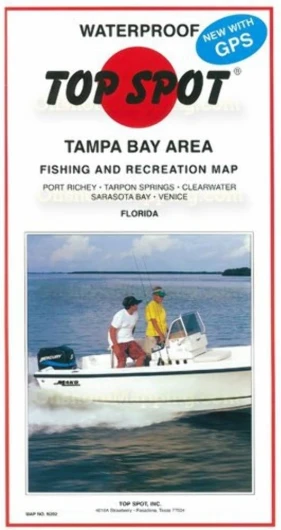
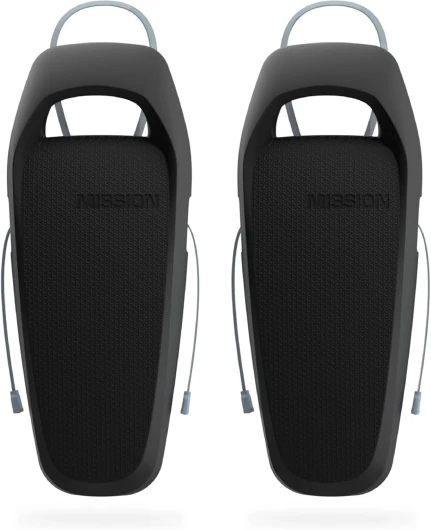
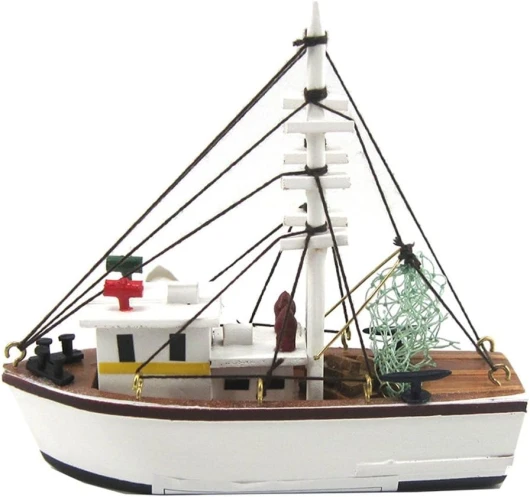
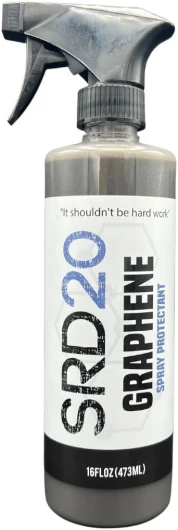
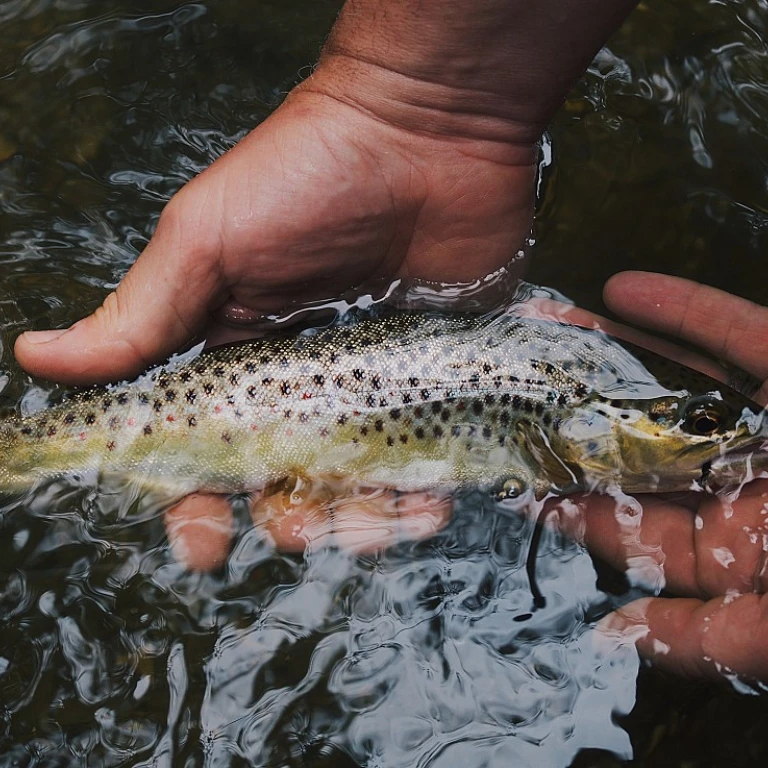
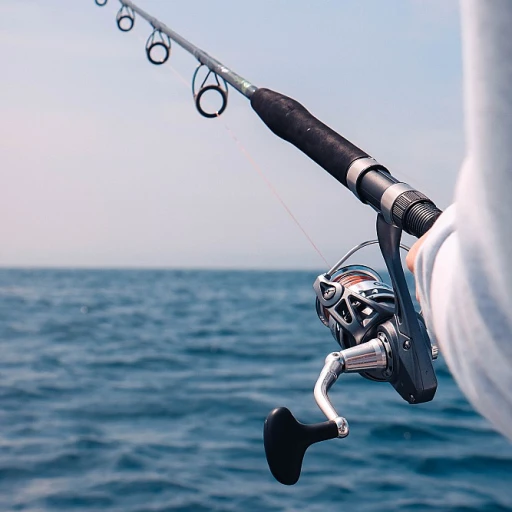

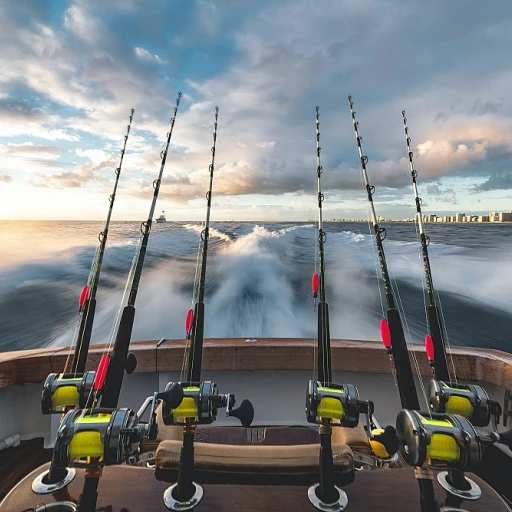

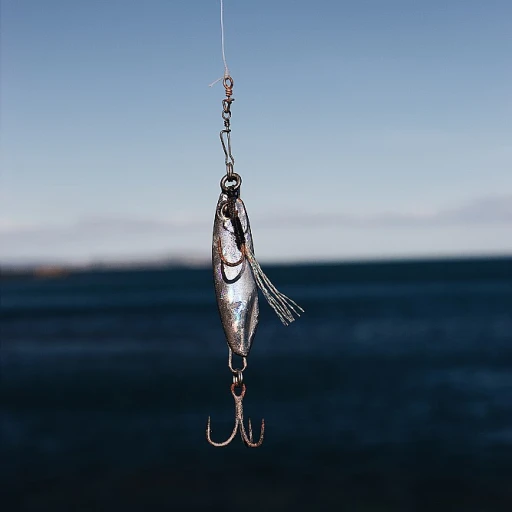
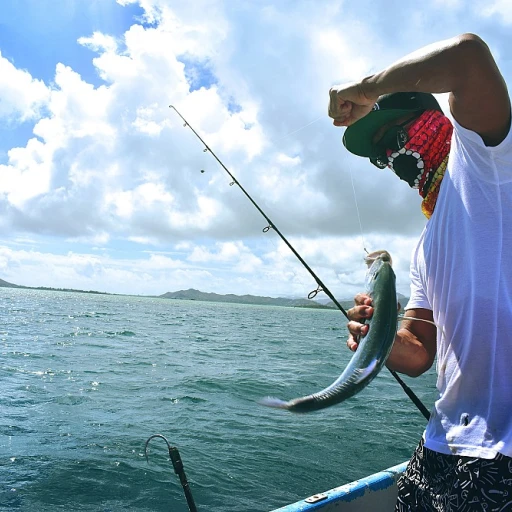

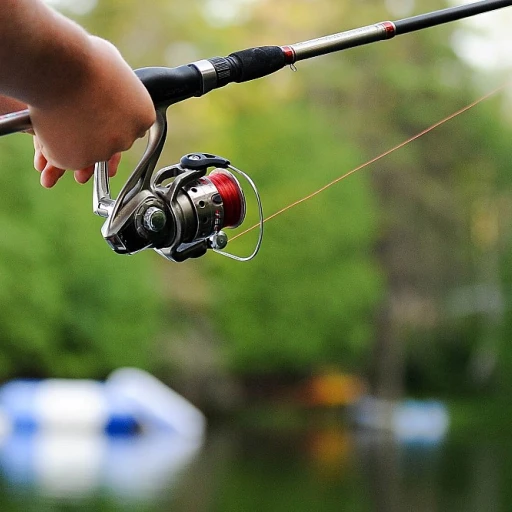
-large-teaser.webp)
